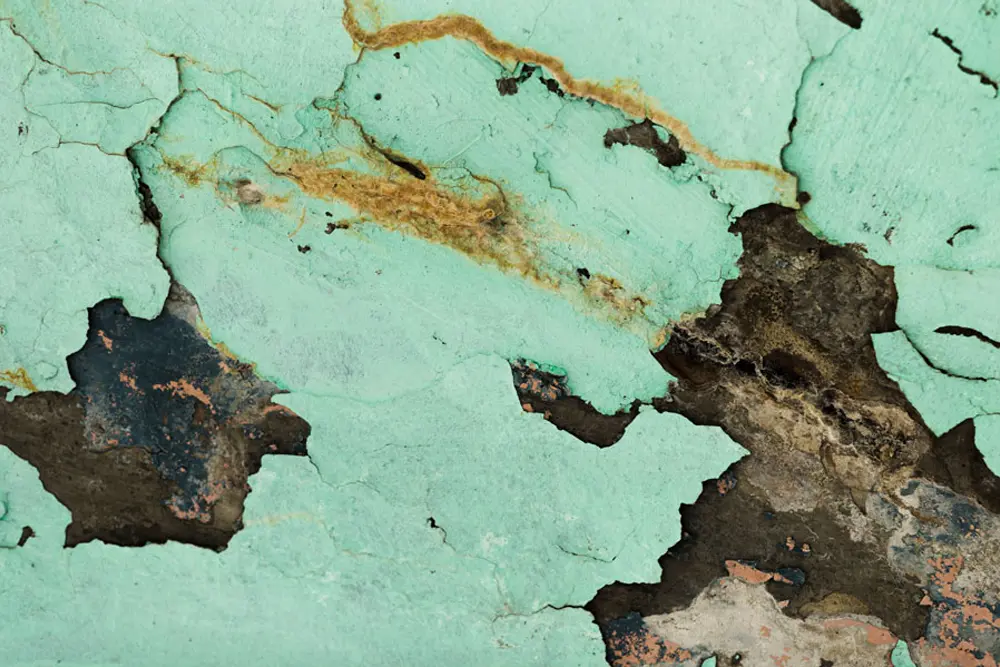Peeling doesn’t just ruin the aesthetic appeal of your floors, it also degrades the strength of the floor. This is because those sections of the floor have lost the chemical bond from epoxy to substrate, and thus will not perform optimally. This can be very discouraging, especially after investing time, energy, and resources into coating a floor.
Make sure each drop of paint counts when applying epoxy to ensure a smooth, safe, strong end floor result that won’t break or strip. We created this simple guide below to help you out!
Epoxy floor paint needs a clean and porous surface in order to bond to concrete. Without this, it is almost guaranteed that your coating is going to fail at some point. In order to achieve the correct surface, preparation in the form of acid etching of the concrete needs to be done. Shot blasting or grinding of the concrete are preferred methods. However, for these methods, we recommend using highly skilled specialists / contractors to perform the grinding as the concrete can be easily damaged.
Reasons Why Your Floor May Be Peeling
Dust and Crumbling Concrete Flooring
You should be able to check for this by looking at the bottom of the peeled paint. If it is covered with a layer of dust, dirt, or grit, then that is the reason for the failure. Dust signalizes that the floor wasn’t prepared well enough when the paint was applied to your garage floor.
Weak crumbling concrete floors can be rectified through the use of a floor primer – this will consolidate the surface to become suitable for the floor paint to have something to bond to. However, it is highly recommended to prepare the surface, especially if the surface isn’t sound, before applying epoxy floor primers.
Dampness or Wetness
Water under the peeled epoxy indicates a damp or wet concrete surface during the application of the epoxy floor paint, or that water is actually migrating through the concrete flooring. While some epoxy may be more forgiving with moisture than others, it should be dry with no residue or moisture.
It is impossible for water to evaporate through the epoxy; any moisture within the substrate of the concrete will create hydrostatic pressure. This will eventually cause enough pressure to lift the epoxy floor paint right off the surface. Generally, moisture issues need to be rectified before any coating can be applied to the floor.
Surface Contamination
If you have spilled oil or other items on your floor, then they can cause the epoxy to not properly adhere. In order to take care of this issue on concrete, you need to pressure wash the floor. Pressure washing and using a floor grinder on the floor should be enough to remove any residue that would prevent proper bonding.
Floor paints could also fail due to some sort of surface contamination and again, inadequate surface preparation. Most floor paints will not stick to oil, grease, wax stains, and spills or even to previously applied sealers containing these products – these may have been applied by a past owner.
Contamination isn’t always what you see at the surface level, it can also occur within the substrate. Concrete is very porous. If water is spilled onto concrete, 95% of it will soak into the substrate. The water will then rise to the surface and evaporate, leaving dry concrete. However, the oil will never evaporate. Cleaning the surface of oil will only be a temporary measure as the oil within the substrate will rise and the surface will be dirty again. Application of epoxies or floor paint over an oil-contaminated floor will only make the oil rise faster.
Please note that acid etching will not remove silicone and tire polymer residue, these areas will need to be treated through grinding. This is because acid needs to react with the free lime within the concrete for it to work properly. The oil on the surface will have no chemical reaction to the acid and as a result, you will have a poor surface profile. Degreasing the area and sealing/priming it with a primer that is specially formulated to adhere to oily surfaces will help to solve the problem.
Prevent Your Floor From Peeling
Since epoxy cures very hard, there is no way for moisture from the substrate to escape. This can cause a buildup of pressure and cause your epoxy to peel. Before installing epoxy, be sure to run a moisture test on your concrete. If you have leakage issues somewhere, you need to address them. It is also always good practice to use an epoxy primer to help mitigate issues with moisture.
Residue From The Acid Etching Of The Surface
Acid etching of garage floors works by reacting with the free lime in the concrete. This results in a breakdown of calcium at the surface, exposing the pores of the concrete.
Calcium is then deposited onto the surface forming a fine layer of dust. It is therefore very important that the dust is effectively removed, either through sweeping, vacuuming, or pouring liberal amounts of water to flush the surface (be sure to leave the concrete to dry and test the moisture of the surface before applying primer and floor paint).
The dust prevents the floor paint from adhering to the surface by sticking to the dust instead, eventually peeling up.
A Sealed Concrete Floor For Prevent Peeling
Epoxy floor coatings will not adhere to concrete that has been previously sealed. Acid etching of the surface will not remove a sealer; the only way to make a previously sealed garage floor bond with epoxy correctly is by grinding the surface. This removes the sealer and gives you the added benefit of preparation of the concrete.
Testing for a sealed surface only requires water droplets spread around different areas of the concrete. Beading of the water droplet indicates a sealed surface whereas water that turns dark and is absorbed into the concrete shows otherwise.
To conduct a stronger test (and to avoid inconclusive evidence) use muriatic acid. If this forms a bead on the surface like a drop of water, the concrete is sealed, otherwise, the acid should react with the concrete by fizzing.
Your chosen floor product should be selected with care and consideration. Whilst the cost should be considered, we do not recommend picking the cheapest or the most expensive, our products have been developed and manufactured to meet the specification and requirement for a range of floors and environments. therefore, you should select your floor paint to meet your specific needs and expectations.
Excessive Amounts Of Laitance
The weak top layer of concrete is known as laitance. This is produced by excess bleed water when trowelling the finish, or through the spraying of extra water, a method commonly used to smoothen the concrete. Concrete dust is a clear sign of excess laitance.
To test for laitance that isn’t visible in the form of concrete dust, we recommend using a screwdriver to scratch the surface. The screwdriver should glide across the concrete without it crumbling or loosening any particles.
Removal of the weakened layer can be achieved through the grinding of the surface, this will ensure that the surface is properly prepared for coating.

